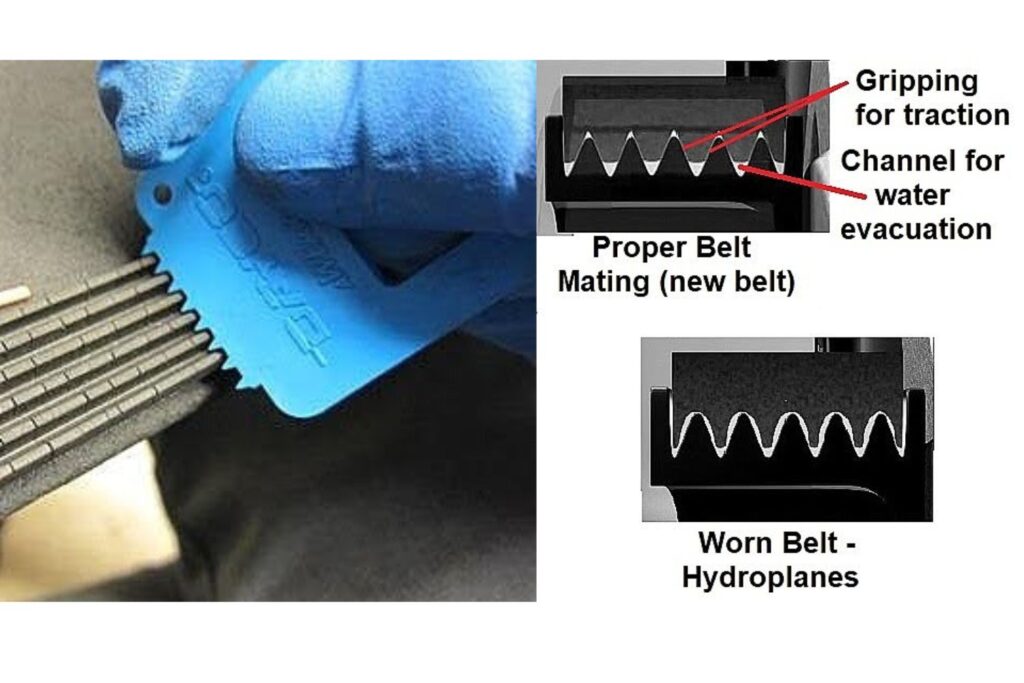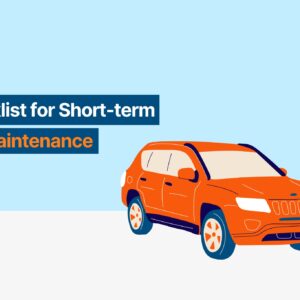Your vehicle won’t last forever, so it’s crucial to perform check-ups and have a proper maintenance routine to prolong its lifespan.
Long-term check-ups let you determine the status of certain components, specifically whether they need repairs or replacement. Compared to short-term check-ups, which are done every few weeks or months, these are done annually because some won’t have any effect if performed frequently.
Long-Term Check-Ups to Maximize Your Car
Checking the transmission fluid, transfer case fluid, shocks and struts, spark plugs, serpentine belt, and air filter at least once a year is a must.
The same goes for flushing the coolant (follow OEM mileage recommendations, but check the coolant level regularly), check the differential oil as well as the cold cranking amps.
Check the Transmission Fluid
The transmission fluid lubricates and cools components, provides hydraulic pressure to the components (except on manual transmissions).
A manual transmission oil leak should be repaired as soon as possible because the first warning you may get that it’s low on fluid is when you hear damaged gears and bearings.
The owner’s manual should have information on where the transmission fluid is located and when to replace it. Keeping a bottle of transmission fluid in case of emergencies is a good idea. You can get one for as low as $8.00 but don’t buy the wrong kind for your transmission. You might pay as much as $50 for a single quart for some vehicles.
Check the Transfer Case Fluid
The transfer case fluid lubricates transfer case parts. Like the transmission fluid, the transfer case fluid doesn’t last forever. Experts recommend changing it every 20,000 to 30,000 miles, but you can consult your owner’s manual for the ideal interval for your ride. Of course, if you don’t ever use your four-wheel drive or drive through high water, it might not ever need changing.
Flush the Coolant Fluid
Flushing the coolant system removes contaminants that might have built up inside while keeping your radiator filled to the appropriate level. And because the radiator keeps your engine cool, a properly filled one would prevent the engine from overheating.
Coolant that is old and contaminated won’t transfer heat as well as new coolant, and clogged radiators will need replacing, so keep the coolant checked and fresh.
Coolant that is old and contaminated won’t transfer heat as well as new coolant, and clogged radiators will need replacing, so keep the coolant checked and fresh.
– Richard McCuistian, ASE Certified Master Automobile Technician
Your owner’s manual shows how frequently you should flush the coolant. However, it’s advised to flush it every two years or 30,000 miles. You can also inspect the hoses and radiator cap for wear if you do.
Inspect the Shocks and Struts
The shocks and struts of your vehicle’s suspension system keep the tires in contact with the road to ensure steering, handling, and braking all function properly. These two also control the impact and rebound when you pass over bumps.
As such, it’s best to have the shocks and struts inspected by professionals once a year or once you notice a decrease in smoothness when driving. A replacement might cost you anywhere between $450 and $2,500, depending on the type of vehicle suspension you have and the rates in your location.
This video shows how you can tell your shocks are totally worn out. Also, you can check them to see if they’re leaking oil, which is something worn shocks will do:
Replace Faulty Spark Plugs
Typically spark plugs can be left alone if they haven’t reached the service interval specified in the owner’s manual or if there are no misfires. Depending on the vehicle, spark plugs will cost between $4 and $20 per plug.
But if you do it, you need to be careful and make sure nothing falls into the spark plug hole. Make sure you start the spark plug straight and screw it as far in with your fingers (use a piece of ⅜ fuel hose) as you can before you tighten it with the socket. Usually plugs tighten to about 15 lbs. ft.
When you pull the plugs out, if you’re looking for a misfire, make sure to keep the plugs in order so you’ll know which plug goes with which cylinder. This is important if you notice a problem with one because you’ll know which cylinder you need to focus on when you’re checking further.
If you’re not feeling confident, you can always have a professional check and replace faulty spark plugs.
Inspect the Serpentine Belt
The serpentine belt is a rubber belt that transports power to the engine accessories, such as the alternator, power steering pump, air conditioning compressor, and water pump. If it’s damaged, you might encounter issues like losing power steering, a malfunctioning air conditioner, or an overheating engine.

As such, having your serpentine belt inspected and replaced at least once a year is a must. Replace the tensioner if it’s bouncing and replace the belt as well. It won’t always have cracks when it’s worn out, either.
Check the Oil Level in the Differential
The differentials are the small gears in the ring gear carrier, which is part of the final drive assembly (four-wheel-drive vehicles have one on each axle). The differential gears are designed to drive a pair of wheels while letting them rotate at different speeds.
But the heaviest load is carried by the ring gear and pinion, and the lubricant in the final drive housing should be checked about once a year unless you notice a leak.
If there is a leak it could be due to a clogged axle vent or simply a bad seal, but don’t try to replace the seal yourself. It’s not as simple as you think.
You can check the oil in the housing though, by removing the fill plug. There is no dipstick or warning light for the final drive unit.
Check and Replace the Battery as Necessary
To check the battery properly, first look at the terminals, clean as necessary, and have the cold cranking amps (CCA) checked (or do it yourself with a tool you can get online).
A battery is like an electrical fuel tank and loses CCA over time. Usually a battery that is more than 3 years old is on the way out.
For instance, a battery that starts out with 800 CCA will, after a year of use, have about 650, then after another year of use about 500, and as year 3 rolls around about 350 or less. The lower the CCA goes, the weaker the battery is.
Inspect the Air Filter
The air filter keeps dirt out to prevent them from damaging the engine. As such, dirt builds up on the filter. That means you’ll have to replace or clean them annually or more frequently, depending on your driving conditions and other factors.
Take the filter out, hold it up to see if the light will shine through the filter element (if it’s too clogged, it won’t), and then drop the filter on concrete to see if dirt is released. Replace the filter with a good one that fits right and replace the plastic filter housing if it’s cracked. Keep in mind: duct tape isn’t a good fix for a cracked filter housing. It can cost you an engine.
Interval of Long-Term Check-Ups
As the name suggests, long-term check-ups are usually done at least once a year or every other year to ensure parts remain functional. One reason they’re not as often inspected is these parts don’t wear out as quickly.
You can also refer to your owner’s manual for the proper interval. As mentioned, some of these inspections can be done every other year.
Any information provided on this Website is for informational purposes only and is not intended to replace consultation with a professional mechanic. The accuracy and timeliness of the information may change from the time of publication.







































